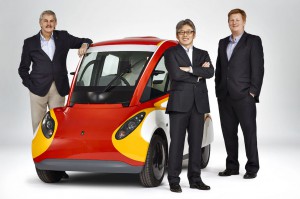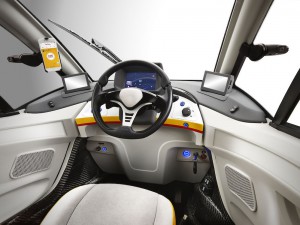With gas prices so low, is it possible that Shell is looking for another revenue stream with the introduction of is city car concept that could deliver a 34% reduction in energy use over its lifetime?
Maybe it should after the results the current version put up.
The three-seater car is co-engineered – the vehicle body, engine design and lubricants are all created together – using Gordon Murray Design’s patented iStream platform. The process saves on the energy required to manufacture the vehicle. Additionally, since it’s a lightweight city car, it uses a lot less gas.
The car weighs about 1,200 pounds using lightweight materials and several components produced by a 3D printer to save time, weight and costs, Shell officials said.
Shell tested the vehicle in Europe, but used European and U.S. standards to determine the car’s capability. The car’s gasoline consumption has been measured using a range of vehicle testing protocols covering steady state and urban driving styles.
(Celebration low-key as Beijing Auto Show opens. For more, Click Here.)
Sample test results include a steady state consumption of 107 miles per gallon [2.64 liters per 100 km] [38 km/liters] [89.1 miles per gallon U.S.] at 70kmph/45mph. It posted an improvement of 4.67g CO2/km on the New European Driving Cycle (NEDC) from the use of specialized lubricants, equivalent to a 5% improvement in fuel efficiency compared to standard lubricants available in the UK, according to Shell.
“This is a significant automobile engineering milestone,” said Mark Gainsborough, executive vice president of Shell’s global lubricants businesses, which backed the project.
“I’m very proud of what Shell’s scientists and their partners at Geo Technology and Gordon Murray Design have achieved. Insights gained from this project could be transformational in terms of how we address energy use in the road transport sector.”
In addition to the impressive manufacturing and gas mileage numbers, it’s very green vehicle. The car uses recycled carbon fiber for its body that can be assembled for a quarter of the price of a conventional steel car and almost the entire car can be recycled at the end of its life.
(Click Here for an early look at the LeEco LeSEE – perhaps Faraday Future’s EV?)
It also relies on technology to help drivers improve their habits. The concept vehicle uses of a modified version of Shell’s Drive App via a smartphone, which provides the driver with real time feedback through an on-screen graphic reminding the driver that fuel consumption is highly dependent on driver’s behavior.
From a styling perspective, the Shell Concept Car offers a new take on the “tall and narrow” look, and dials up the fun factor with its sporty central driving position and two passenger seats behind, Shell noted.
The design produces an extremely novel seating arrangement allowing three people to be carried despite the car’s diminutive exterior dimensions and gives it a turning circle smaller than that of a London taxi, making it ideal for urban driving, the company noted.
“Our car may be small, but it’s packed with potential,” said Dr. Andrew Hepher, vice president, lubricant research. “We want to accelerate the conversation about how we make road vehicles more energy efficient and less carbon-intensive.
(To see more about VW’s “advanced luxury” battery SUV at Beijing, Click Here.)
“In the coming weeks and months, we look forward to sharing our research insights from this project with engine designers, car manufacturers, academics and other experts across the automotive sector.”



And the chances it will pass crash are about -50%.
Did you drive this one, Paul? Will we be able to play with it stateside anytime soon?
Sadly, no, Warren. I was overseas.
Paul E.
It’s odd seeing three grown suited men standing next to what appears to be a Fisher-Price toy.